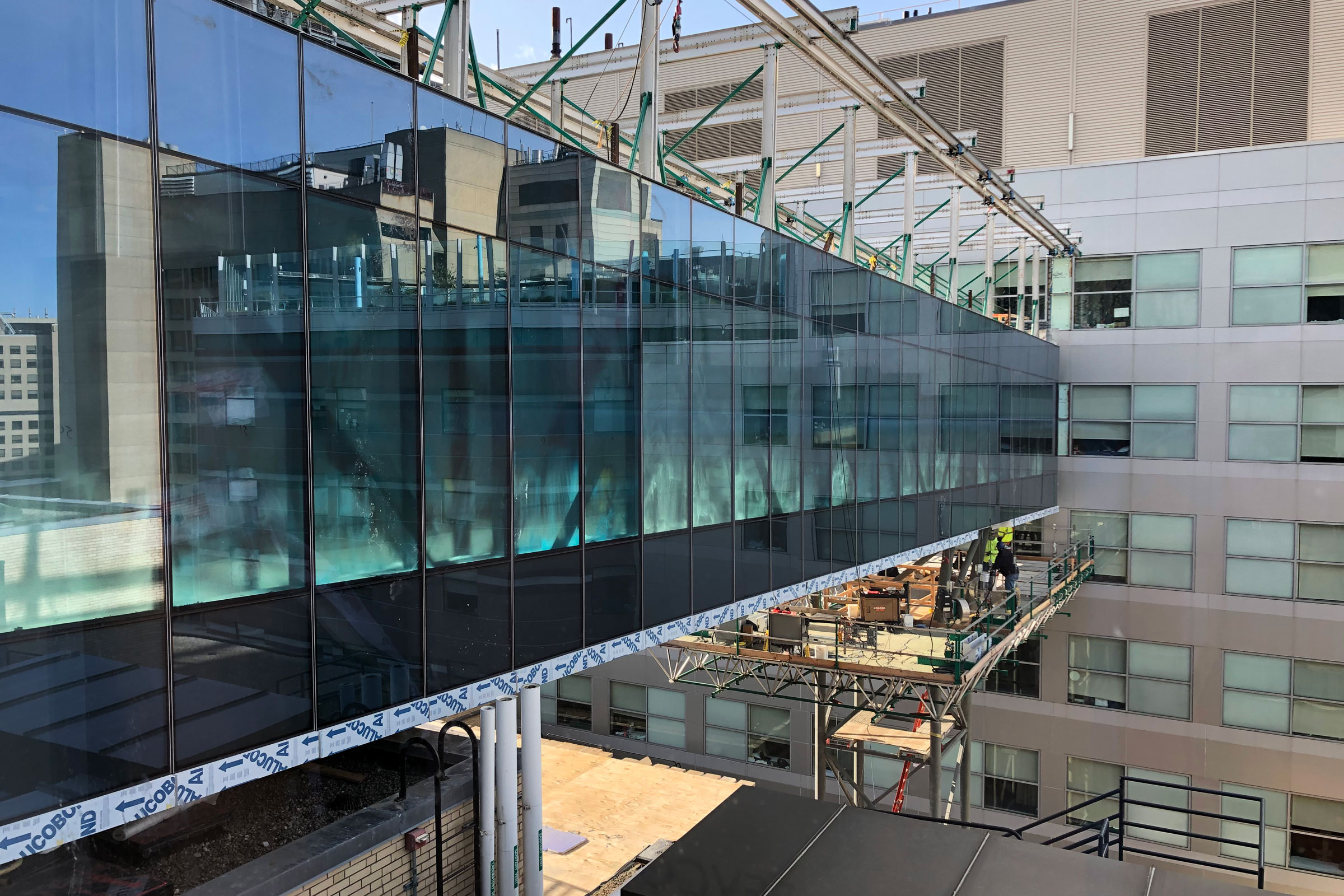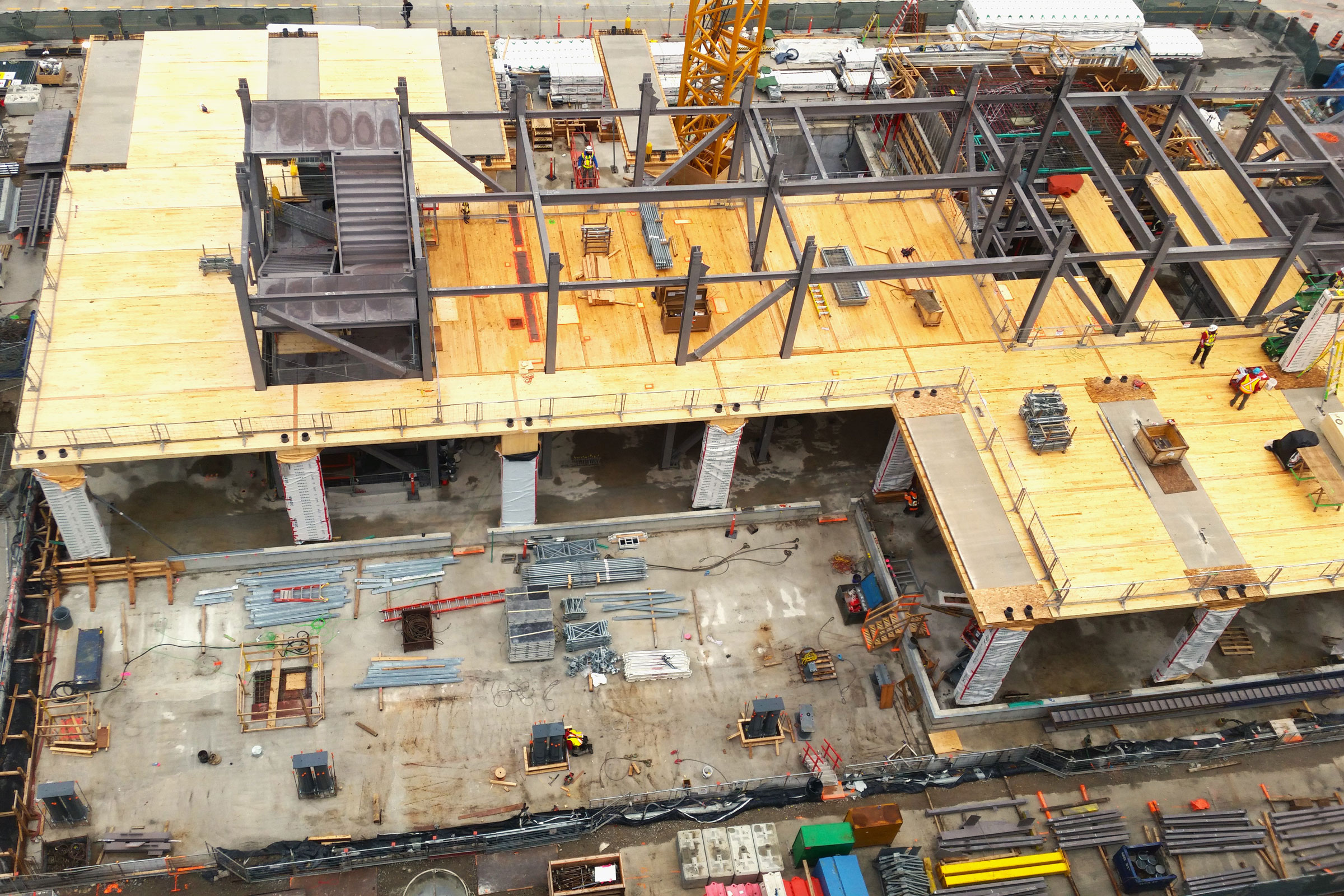Story at a glance:
- HCM software can help streamline administrative tasks.
- BIM software can help companies reduce waste.
Technology influences nearly every market in our world, especially the construction sector. Although construction software is not new, it is a facet of technology that is always evolving and changing.
Construction software is the collection of information, processes, and programs used to perform various aspects such as project planning, decision-making support, information sharing, and project management support. This type of software is used by architects and engineers, as well as real estate companies and construction firms to reduce time, minimize cost, and control and reduce waste within the industry.
The global construction software market was valued at $1,753.0 million USD in 2021 and is forecasted to reach $3,549 million USD by 2030. This growth is driven by the increased demand for both public and private construction projects as well as an increase in demand for construction projects with high complexity.
As the market for construction software continues to grow, so will the uses and benefits of implementing various technologies in projects. Here are a few tips for using software in construction.
1. Choose a centralized management system.

The Hale Family Building is an 11-story, state-of-the-art facility that is part of Boston Children’s Hospital. Procore’s construction management software was used in the construction. Photo courtesy of Suffolk
Measuring and monitoring performance is a crucial part of any construction project, but with so many moving parts and people, it’s often easier said than done. Fortunately, construction management programs like those offered by Sage or Procore help organize all of a project’s key players and components in one place, making it that much easier for managers to conduct their work.
“A field manager can use an iPad and access project controls and revenue in the field. Everything is connected,” Paul Pedini, senior vice president for Skanska Civil in New England, previously told gb&d. “Actions are sent to the right people immediately so they can spend their time managing the project like they are supposed to be doing.”
An effective construction management system will allow managers to track project details, share important documents, and make requests with ease. Sage 100 Contractor, for example, helps manage critical business operations and provides instant access to project status, while also allowing managers to easily integrate budgets, purchase orders, proposals, and the like.
Procore’s construction management software, on the other hand, is designed to be used by all of a project’s key players—including owners, managers, and contractors—offering solutions for managing safety, analytics, productivity, schedules, workflows, and more.
“In most corporations workflows happen within the walls of that business, but in construction, workflows jump from company to company,” Tooey Courtemanche, CEO of Procore, previously told gb&d. “All of these complex workflows start in our project management tool. Everyone can go there to see what they need to do, what they need to bring, what is happening that day, they can raise concerns or issues about the job, and turn to other tools that support that core product.”
2. Leverage video monitoring to its full potential.

Companies like Sensera Systems provide convenient and sustainable real-time monitoring solutions that allow project managers to view, monitor, and share site data via easy-to-use camera management software. Photo courtesy of Sensera Systems
A core component of construction management is monitoring the jobsite—something that, while necessary to ensure safety and security, has historically required routine in-person visits from the project manager. Real-time video monitoring, however, negates this need, helping to save both time and money. “Being able to view progress remotely helps project managers to cut their travel schedules, no longer having to go from site to site all the time,” Rob Garber, CEO of Sensera Systems, previously told gb&d.
Video monitoring is by no means a new technology, but companies like Sensera Systems have perfected it, making it a more accessible and greener solution for all manner of construction projects, regardless of their size or location. Sensera’s lightweight cameras are powered by solar cells and require no external power source—and seeing as they transmit images and data via Wi-Fi, they don’t require an Ethernet cable, either.
“Our US-manufactured systems, which are NDAA-compliant, have a very small footprint,” Carrie Hunter, vice president of business development for Sensera, told gb&d in a previous publication. “Not only are the cameras small, lightweight, and simple to install onsite, they are designed to run 24 hours a day, seven days a week, 365 days a year without interruption. Our unique, low-powered, patented system allows for our cameras to run on a very small amount of power and omits the need for hundreds of pounds of batteries or oversized solar panels on the site.”
Sensera’s SiteCloud platform provides 100% web-based software for viewing, monitoring, and sharing real-time site data. The platform automatically generates time-lapse footage, offers simultaneous multi-user access, provides secure storage and backup of project data, and more. SiteCloud easily integrates with construction management software like Procore, Autodesk, and PlainGrid for all-around convenience.
In addition to ensuring security, safety, and facilitating project management, video monitoring can also be useful for marketing purposes. Video footage, for instance, can be used to help enliven company websites, send a powerful message to build anticipation, or even boost a site’s search placement in engines like Google or Bing.
3. Don’t be afraid to use cloud-based technologies.

Cloud-based software makes it easy to access project data regardless of one’s location. Photo courtesy of Sage
The cloud refers to software and services that are stored and accessed over the internet instead of on a computer hard drive. Utilizing cloud-based software eliminates the need for businesses to host their solutions on-premises via their own servers. Storing data in the cloud means that it can be accessed from anywhere with an internet connection—making remote work even easier.
Although cloud-based technologies can make work easier, there are always questions that arise with implementing new technology, some of the most important being is it secure, reliable, or too expensive?
“Business owners are often hyper-vigilant when it comes to data security, so it is not surprising that cybersecurity is a top concern when considering a move to the cloud,” Dustin Stephens, vice president of Sage’s construction and real estate practice, previously wrote for gb&d. “Some worry that their data could be at increased risk in the cloud. However, hyper-scale cloud providers can offer enterprise-grade security, covering a business from all angles—physical, network, application, and data. Cloud providers deliver highly secured environments and work continuously to stop threats and upgrade protections so you can stop worrying about cyber threats and focus on running your business.”
It’s not unusual for businesses to invest quite a bit upfront when setting up their on-premises solutions. This is due in part to the high costs of managing servers and deploying expensive upgrades. The cloud reduces cost and time spent on implementation by removing the building process and allows companies to leverage the technology without the IT expense. Companies can also benefit from a high return on investment and a low total cost of ownership of cloud solutions.
“While some believe their on-premises network infrastructure is more reliable than a cloud solution, the truth is that they could be at risk of losing data if they’re not performing backups of their on-premises data correctly and on a regular basis,” Stephens says. “With an on-premises solution, businesses could also suffer from a major setback in the event of a natural disaster. Cloud options are more reliable as they automatically back up data and provide peace of mind in disaster recovery protocols, helping you keep your mission critical solutions up and running wherever and whenever they are needed.”
4. Consider what you need before choosing a software solution.

Before choosing a construction software solution or solutions, it’s important to know what your expectations for it are. Photo courtesy of Sage
Knowing what results you desire and the expectations you have before deciding on software solutions is a critical first step. Software companies like Sage offer a variety of software solutions for financial management, preconstruction, and field operations.
“As you consider new technologies, it is important to understand your options and also to know what it is you need from your solution. Make a pros and cons list of your current solution along with a list of non-negotiables your new solution must-have,” Stephens says. “Once you have clearly defined what you need, you can narrow down your list of options and have a solid starting point for finding the best cloud solution for your business.”
Using cloud-based technologies is one option to consider. An integrated cloud-based accounting solution can help you gain financial insight across your business. It can also help save a lot of time and energy by eliminating error-prone double data entry. When planning a move to cloud-based software it’s important to first understand your options, which include a self-hosted private cloud, third-party hosting, software as a service (SaaS), as well as add-ons and mobile applications.
“Some companies may not be in a position to completely overhaul their current accounting solution. If you find yourself in this position, you could consider add-on solutions and mobile apps that integrate with your current on-premises solution to provide remote work options,” Stephens says. “It is important for you to consider when you might be ready to change your back-end accounting solution and whether you could still use those tools with a new solution.”
5. Use BIM to your advantage.

BIM software can help facilitate decision-making, assist in problem solving, and prevent undue resource waste. Photo courtesy of Sage
Building Information Modeling (BIM) is a digital representation that communicates the physical and functional characteristics of a project. BIM is more than a typical 3D modeling software though. “BIM technologies have been around in some form since the 1970s and are widely used in architecture, engineering, and construction, but it’s only in the past few years that it’s become easier for estimators to build estimates using model and 2D content,” says Dustin Anderson, former vice president and general manager of Sage’s construction and real estate practice.
Thoughtful BIM software offers an involved business process and provides collaborative tools to facilitate results. BIM should be used as a shared resource for decision-making throughout a project’s life cycle. BIM can assist in problem solving, solution simulations, and impact analysis. “BIM can help eliminate a range of issues that plague contractors, such as cost, schedule, constructability, and rework. It also facilitates collaboration with your entire project team so you can do more work faster,” says Anderson.
The 2020 Construction Hiring and Business Outlook Survey conducted by the Associated General Contractors of America and Sage found that 18% of respondents expected an increase in the number of projects that involve BIM in 2020, while 39% expected to have about the same number of BIM projects. Those surveyed are primarily using it for clash detection, constructability input into the design process, construction means and methods, and to visually communicate project scope to clients.
“BIM technology supports sustainable building practices by reducing waste, managing water resources, and minimizing energy consumption. By allowing stakeholders to fully coordinate building components in 3D prior to the construction phase, it helps cut down on change orders and revisions, which can be costly and time-consuming,” Anderson says.
Since BIM involves multiple parts of the construction ecosystem, it’s important to establish a process that encourages feedback, knowledge sharing, and ongoing collaboration. Incorporating thorough training, awareness, and adaptability into the process of choosing a BIM solution will help ensure a smooth transition.
6. Utilize HCM software to manage people operations.

HCM software can help companies build a strong workforce and streamline their HR functions. Photo courtesy of Sage
The use of human capital management (HCM) software and workforce management apps can help companies attract and retain workers while streamlining HR functions and reducing the time spent on administrative tasks. HCM can effectively manage people resources and help companies easily react and adapt to changing needs.
“While building a strong workforce is not easy, a comprehensive HCM solution can certainly help ease the burden. It allows you to automate many key HR functions, beginning with the essential steps of recruitment and hiring,” Stephens says. “This encourages greater visibility and collaboration throughout the process, helping your teams find the best fits for your organization. And the time saved by automating processes allows you to take a more strategic approach and concentrate your efforts on important aspects, like the interview process. Ensuring your teams have the right people in place helps reduce employee turnover, maximizes your company’s return on employee investment, and results in more productive and satisfied employees.”
HCM software plays an important role in the employee experience as it is the software employees use for onboarding, benefits enrollment, and other HR tasks. Utilizing HCM software can help streamline time and attendance, pay stubs, expense reports, company policies, updates, time-off requests, and schedules.
“A cloud-based HCM system further encourages collaboration and makes it easier for your teams to share goals and priorities to unite efforts while they are working remotely. Workforce management apps like automated time capture can further enhance HCM solutions while helping to free up employee time and ease frustrations for both field and back-office teams,” Stephens says.
Andrew Biro contributed to this article.




